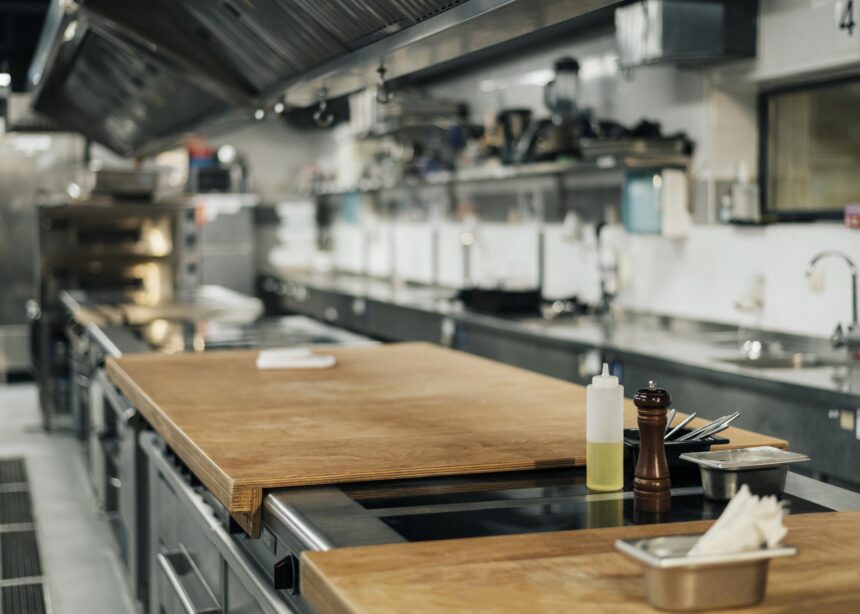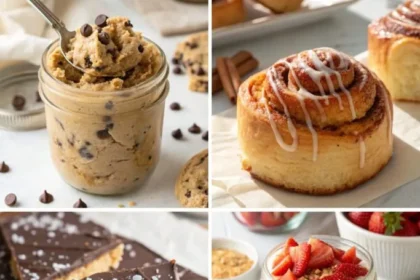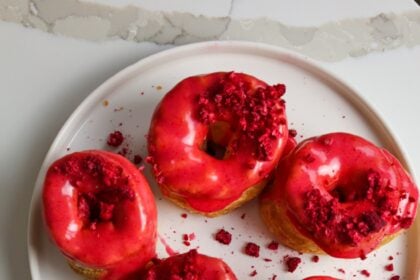You’ve probably ordered from a ghost kitchen this month without knowing it. Here’s how delivery’s hidden engine works—and why it’s quietly rewriting the rules of dinner.
Ghost Kitchens 101 — The Hidden Engine of Delivery 🚚
Ghost kitchens go by many names—virtual brands, cloud kitchens, delivery-only concepts—but the idea is simple: purpose-built commercial kitchens optimized for off-premise orders. No dining room, no host stand, no mood lighting. Just a high-throughput line, a delivery tablet stack, and chefs focused on speed and consistency. In practice, a single address might house several menus at once, each with its own logo and cuisine. That’s why you can “discover” a new burger joint tonight that’s actually sharing a line with a ramen brand and a taco concept.
If you want to align the terminology with how industry pros use it, start with the definition of a virtual restaurant (also called a ghost kitchen). The core play is stripping away front-of-house costs to reinvest in operations, data, and reach.
“Ghost kitchens are like cheat codes for foodies — unlimited options without leaving the couch.” — a TikTok user
Why They Took Off — Apps, Convenience, and Real Estate Arbitrage
Delivery apps rewired consumer behavior. When tens of millions of people open their phones and sort by cravings, delivery ETAs, or promo deals, it creates a market where the digital storefront is the storefront. Ghost kitchens ride that wave with three structural advantages:
- Lower fixed costs. No expensive dining room build-outs.
- Faster iteration. Spinning up a new brand can be as quick as designing a menu, testing ops, and uploading photos.
- Flexible geography. You can put kitchens where demand is—near dense neighborhoods, campuses, hospitals, or nightlife corridors.
Delivery Apps Changed Demand Curves
In a phone-first world, cuisine is a filter and brand is a tile. If the burger looks great and lands in 25 minutes, you’re in. Ghost kitchens can tailor menus to each neighborhood’s data fingerprint, emphasizing items that convert and travel well.
Lower Overhead, Faster Iteration
Because there’s no front-of-house, teams can trial a spicy chicken concept for a month, sunset it next month, and double down on tacos the next—without the reputational risk of “closing a restaurant.” It’s software thinking applied to food: test, learn, optimize.
Inside a Ghost Kitchen — How the Model Actually Works 🔧
Step into a ghost kitchen during the dinner rush and you’ll see cooks working an assembly rhythm: prep, batch, fire, pack, handoff. The magic isn’t a single recipe; it’s system design.
One Box, Many Brands
A single line may run three to ten brands. The trick is menu engineering so ingredients overlap (to simplify inventory) while the offers feel distinct to customers. Think shared proteins, sauces built from a master base, and sides that reappear with different names.
Data-First Menus and Personalization
Menus aren’t just chef-driven—they’re analytics-driven. Operators monitor conversion rates by thumbnail, average order value by combo, and cancellation risk by prep time. That feedback loop fuels personalization, upsells, and limited-time offers. For a primer on how personalization is hitting QSR, see AI menus and imagine those capabilities plugged into delivery-only brands.
The Tech Stack — Automation from Stove to Sidewalk 🤖
The same forces transforming advanced manufacturing are creeping into kitchens and the curb.
Robots and Smart Lines in the Kitchen
Automation is moving from novelty to throughput: automated fryers that lift baskets on sensor cues, robotic arms portioning sauces, computer vision checking doneness, and predictive make-lines staging ingredients before an order finishes. This isn’t sci-fi; it’s how high-volume kitchens win the dinner rush with fewer errors. For a timely look at the frontier, see how robotics is reshaping hospitality—from prep to plating.
Last-Mile Gets Smarter
The kitchen-to-door leg is the most expensive mile. That’s why operators and platforms experiment with micro-fulfillment, courier batching, and autonomy. As pilots expand, we’re seeing mixed fleets: human couriers for high-touch routes and bots for predictable, short hops. Recent launches like DoorDash’s new delivery robot hint at how ETAs could shrink and per-order delivery costs could come down.
“Robots cooking and robots delivering? The future dinner rush is going to be wild.” — an X user
The Business Case — From Unit Economics to Scale 📈
The pitch to founders and franchisees is straightforward: lower capex, simpler staffing, and tighter P&L control. But the prize is bigger than a single kitchen. If you can replicate a playbook across twenty neighborhoods, you turn a collection of menus into a network that learns.
Cost Efficiency and Test-and-Learn Expansion
Ghost kitchens do best when they keep SKUs lean, master travel-tested packaging, and standardize station design. The result: predictable prep times that make delivery promises believable.
Market Size: Hype vs. Reality
There’s excitement—as well as a reality check—around growth projections. Industry tracking has cited Euromonitor’s $1T projection for delivery-only and virtual restaurant models by 2030. Ambitious? Yes. But even partial realization would mean millions more nightly orders fulfilled by kitchens you’ll never dine in.
Trust, Quality, and Transparency — The Tough Parts 🧩
For all the efficiency wins, ghost kitchens wrestle with three thorny issues.
Brand Recognition and Customer Trust
A virtual brand can feel like a pop-up on your phone—exciting but unfamiliar. The fix: clear disclosures, consistent packaging, and strong ratings. Many operators pair new brands with known anchors to borrow credibility.
Quality Control Without a Dining Room
No dining room means no table touch. That raises the bar on packaging discipline and SOPs. Heat retention, vented lids for fried items, moisture barriers for buns—small details protect that first bite. Kitchens that win here obsess over travel time and temp curves.
Signal vs. Noise on the Apps
App marketplaces are crowded. Photos, names, and taglines matter because you’ve got a second to catch a scroller’s eye. Smart operators A/B test thumbnails and descriptions the way e-commerce teams test product pages.
“Didn’t realize my ‘new favorite spot’ was a virtual brand; delivery was fast and legit.” — a Redditor
Where It’s Going — Partnerships, Surplus, and Smarter Menus 🚀
Ghost kitchens aren’t islands; they’re nodes in a bigger urban food system.
Pairing with Surplus Platforms and City Goals
Food waste is both an ethical and economic problem. Delivery-only kitchens can integrate surplus routing and dynamic discounting to keep good food out of landfills. For context on how tech connects excess food to buyers, see how apps are saving millions of meals—a playbook ghost kitchens can adopt to monetize late-night overproduction.
Multi-Brand Pods Near Demand Hubs
Expect more co-located pods next to grocery anchors, stadiums, campuses, and hospitals where dinner spikes on predictable schedules. With autonomy in the mix, pods can be smaller, closer to demand, and cheaper to run.
Cities as Partners, Not Enforcers
Forward-leaning municipalities will treat ghost kitchens as infrastructure—zoning in light-industrial corridors, encouraging energy-efficient buildouts, and aligning health inspections for multi-brand sites.
Ordering from a Ghost Kitchen — What It Means for You 🍔
Want to get the best experience from an address you’ve never heard of?
- Read the ratings like a pro. Sort by recency and filter for photos; look for consistent praise on heat, texture, and packaging.
- Travel-time math matters. Fries don’t forgive. If you’re 25 minutes away, pick items that travel well (rice bowls, noodles, sauced wings).
- Follow the combos. Virtual brands often stack value with bundles—two mains plus sides usually beats à la carte.
- Try the specialty. Many brands are built around one hero item (say, a smashburger). Order that first; branch out later.
- Watch for personalization. The best operators use data to surface add-ons you’ll actually want—another place AI-driven menus quietly shine.
The Challenges Ahead — And Why They’re Solvable
No model is frictionless, and ghost kitchens face a few speed bumps: courier shortages on rainy weekends, rising delivery fees that spook customers, and neighborhood fatigue with too many scooters at one loading dock. But each challenge has a counter: courier batching to raise earnings per hour, membership programs to tame fees, better site design for curb management.
The consumer side will keep evolving, too. Some diners will demand clarity on whether a brand is virtual or tied to a brick-and-mortar spot. Expect platforms to add clearer disclosures—and for strong virtual brands to graduate into pop-ups and flagship counters where fans can finally meet the logo.
The Culture Shift: Dinner as an API
Here’s the bigger picture: ghost kitchens turn dinner into something programmable. Brands spin up where demand spikes, menus shift with season and data, robots handle the repetitive tasks, and autonomous couriers eat the last mile. The result is a city that feels like it has twice as many restaurants as it did five years ago—even if half of them live behind unmarked doors.
And when the system works, everyone wins: cooks get steady shifts, diners get more choice, and neighborhoods get fewer dark storefronts and more small industrial sites quietly humming at dinnertime.
FAQ: Everything You Need to Know About Ghost Kitchens
What exactly are ghost kitchens?
Ghost kitchens are commercial spaces dedicated to preparing food exclusively for delivery or takeout, often running multiple virtual brands from one location.
How do ghost kitchens benefit consumers?
By cutting front-of-house costs, ghost kitchens put resources into speed, variety, and packaging—meaning faster delivery and menus tuned to what people actually order.
Are ghost kitchens the future of dining?
Traditional restaurants aren’t going anywhere, but ghost kitchens will keep expanding wherever delivery demand is strong and rents are high.
How can I tell if I’m ordering from a ghost kitchen?
Many apps now label virtual brands, but even when they don’t, you can spot ghost kitchens by shared addresses, overlapping menus, and a focus on delivery bundles.
What about quality and transparency?
Top ghost kitchens invest in packaging, time-and-temp controls, and clear branding. Ratings and recent reviews are your best signal for consistency.









